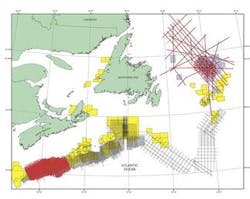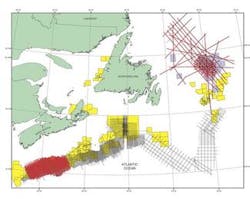Efficiency vs. creativity
Victor Schmidt • Houston
Great strides have been made in business efficiency over the past 20 years. Computer technology continues to advance and is now synchronizing data across business units so that asset teams have access to internally consistent data sets. This has collapsed duplication of effort within oil companies and justified the restructuring of exploration into smaller business units, with fewer professionals.
A danger in this is now becoming apparent: the loss of creativity represented by the reduction in the constellation of internally generated ideas/prospects available for a company to examine. The industry continues to sound the twin complaints:
- Management saying there are not enough drillable prospects
- Geoscientists saying they have too many projects to work effectively.
The push for business efficiency has produced a back-eddy – inefficiency in creativity – and less corporate effectiveness in exploration.
Perhaps the solution to both complaints is a wider constellation of ideas, properly funded. Computers are great at repetitive tasks, but they cannot think. They cannot synthesize information to produce drillable prospects.
The task of the geoscientist is to recognize oil-prospective patterns from large volumes of extremely diverse information. Perhaps what the industry really needs is more, not less, creative minds with links to properly accessible data.
Fluid analyzer
Numar (Halliburton Energy Services) commercialized its MRILab logging tool. The tool analyzes key reservoir fluid properties in real-time at reservoir temperature and pressure, including:
- Fluid type
- Viscosity
- Gas-to-oil ratio.
The tool analyzes reservoir fluid samples in oil-based mud systems to determine mud filtrate contamination and pumping time. It operates as a component of the Reservoir Description Tool, making laboratory quality measurements for reservoir engineering and completion design. The downhole measurements eliminate the need to reconstruct downhole conditions in the laboratory.
Geolog release
Paradigm has released Geolog 6.5 software for log management, correlation, and petrophysics. According to the company, the new release features the ∑pos 3.0 data management and interoperability integration framework, which provides a way for users to move seamlessly between Paradigm products. It also can directly access proprietary and third party data repositories. The new release has enhancements to the graphical user interface and support for 64-bit Solaris, IRIX, and Linux. New add-on modules include Geomage, an image log analysis module, and Geolog Correlator. Enhancements to Facimage are also included.
Oman review
Spectrum Energy and Information Technology Ltd. signed a six-year exclusive agreement with the Sultanate of Oman for data reprocessing and acquisition of new seismic, gravity, and magnetic data along Oman's south coast.
The project will reprocess 6,000 km of existing 2D seismic from the Oman/Yemen border to the eastern end of the Gulf of Oman. Spectrum will acquire 12,000 km of new regional 2D seismic, gravity, and magnetic data along the same coastline. The survey will extend out to the 3,000 m bathymetric contour and tie all previous wells.
Controlling risks
Landmark Graphics (Halliburton) has released DecisionSpace DMS, software to integrate risk factors for business objectives. The goal of the software is to reduce cycle-time for the field development decisions.
The software simulates and manages numerous production and financial outcomes from multiple reservoir models, drilling plans, facilities plans, and economic scenarios. It allows asset teams to analyze uncertainties and risks while evaluating alternatives.
EXPLORATION Canada survey
TGS-Nopec begins its 2003 acqui-sition season with a multi-client 2D seismic survey offshore New-foundland and Nova Scotia.
The new shooting will cover key blocks in Newfoundland's 2003 call for bids and will add 12,000 km to the company's 45,000-km seimic grid offshore Nova Scotia. The M/V Odin Explorer will gather the survey and complete field operations within six months.
Canadian logs
A2D Technologies is offering Eastern Canada's offshore well log collection through its online database, Log-Line Plus! The entire dataset is now accessible from the desktop. Logs from the 431 wells are available in multiple formats: raster image logs, LAS logs, and workstation-ready processed logs.
null
TECHNOLOGY Downhole seismic
The US Department of Energy's Idaho National Engineering and Environmental Laboratory developed two new devices for downhole seismic surveying. The first is a downhole source that uses gas to create an acoustic pulse. The infinitely rechargeable source uses electrolysis to generate hydrogen and oxygen gasses downhole. These gases then are ignited to generate the pulse.
The second device is a downhole geophone. The non-clamping and quick clamp-and-release geophone prototypes have been successfully tested in shallow wells and show resolution similar to other fixed-clamped geophones. The non-clamping version is water coupled, eliminating electric mechanical clamping mechanisms and power control. It is lightweight and easily deployed in long strings.
High-density projection
Fakespace Systems announced an ultra high-resolution, digital, active-stereoscopic projection system. The new projector provides UXGA resolution of 1,600 x 1,200 pixels. This creates a bright stable display for visualization. It will be available in August 2003.

